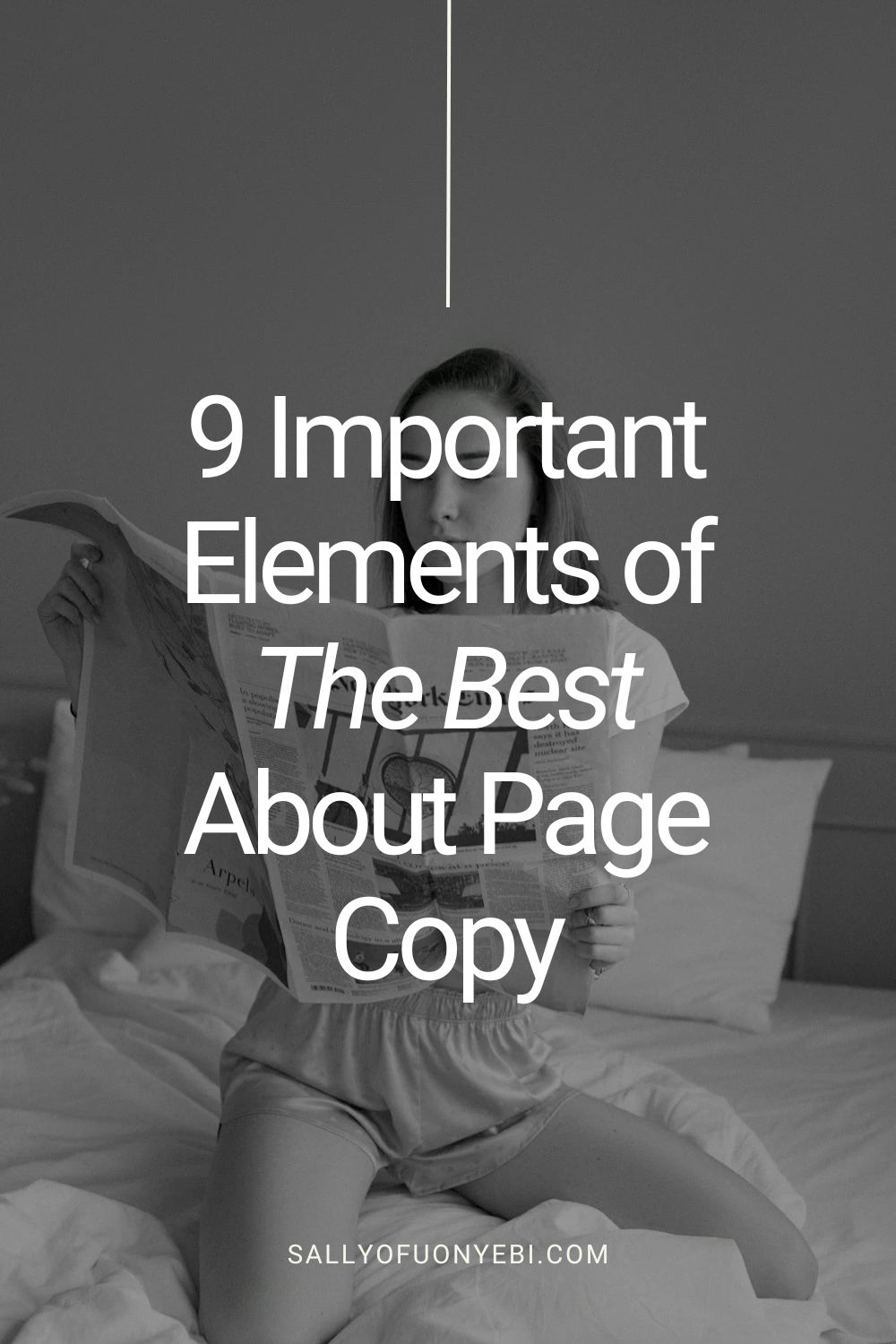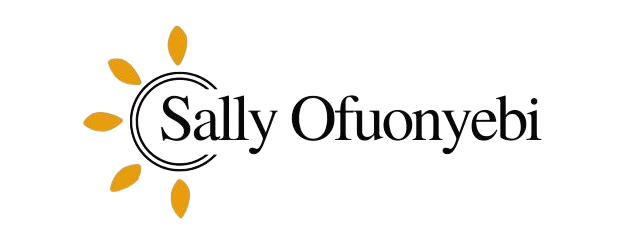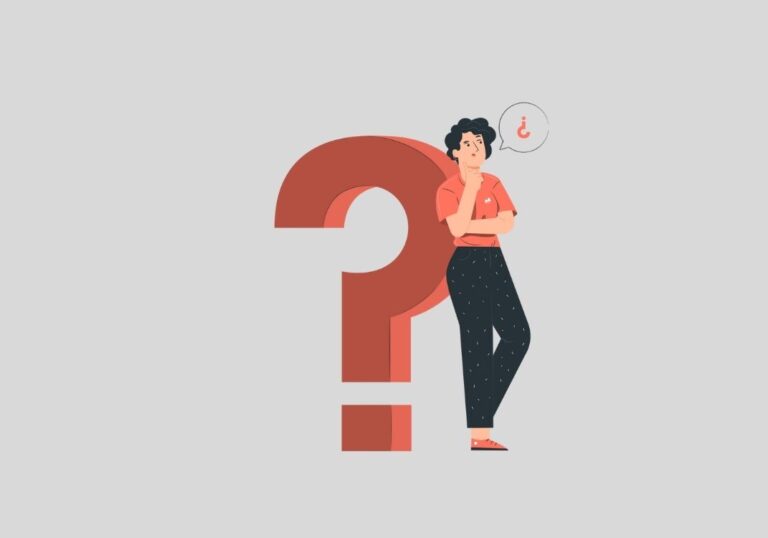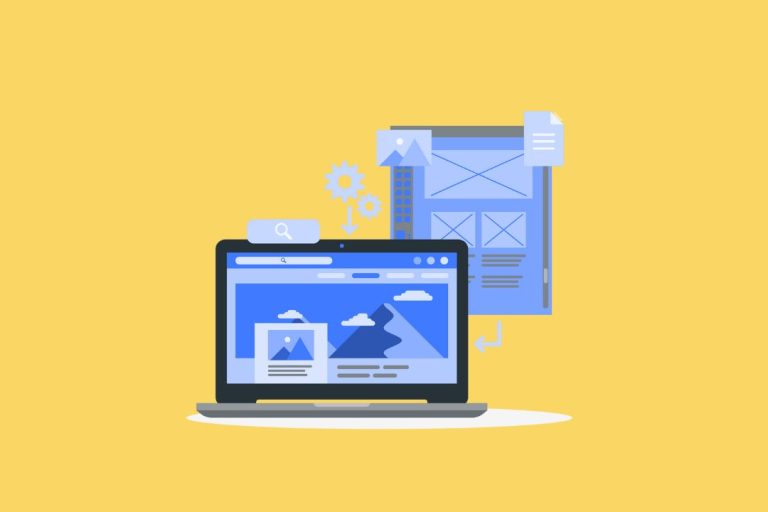How to Write an About Page That Interests Dream Clients

Want an About page copywriting formula that converts? Here is exactly how to write an About page for your website.
You’ve heard more times than you can count that it shouldn’t be about you. This makes it a task you keep pushing to the backburner.
But, I’ve got good news!
Your About page can be such a fun page to write if you know the “how.”
As a copywriter who writes About pages for a living, I’ll show you how to write yours, step by step, so you can attract your dream clients.
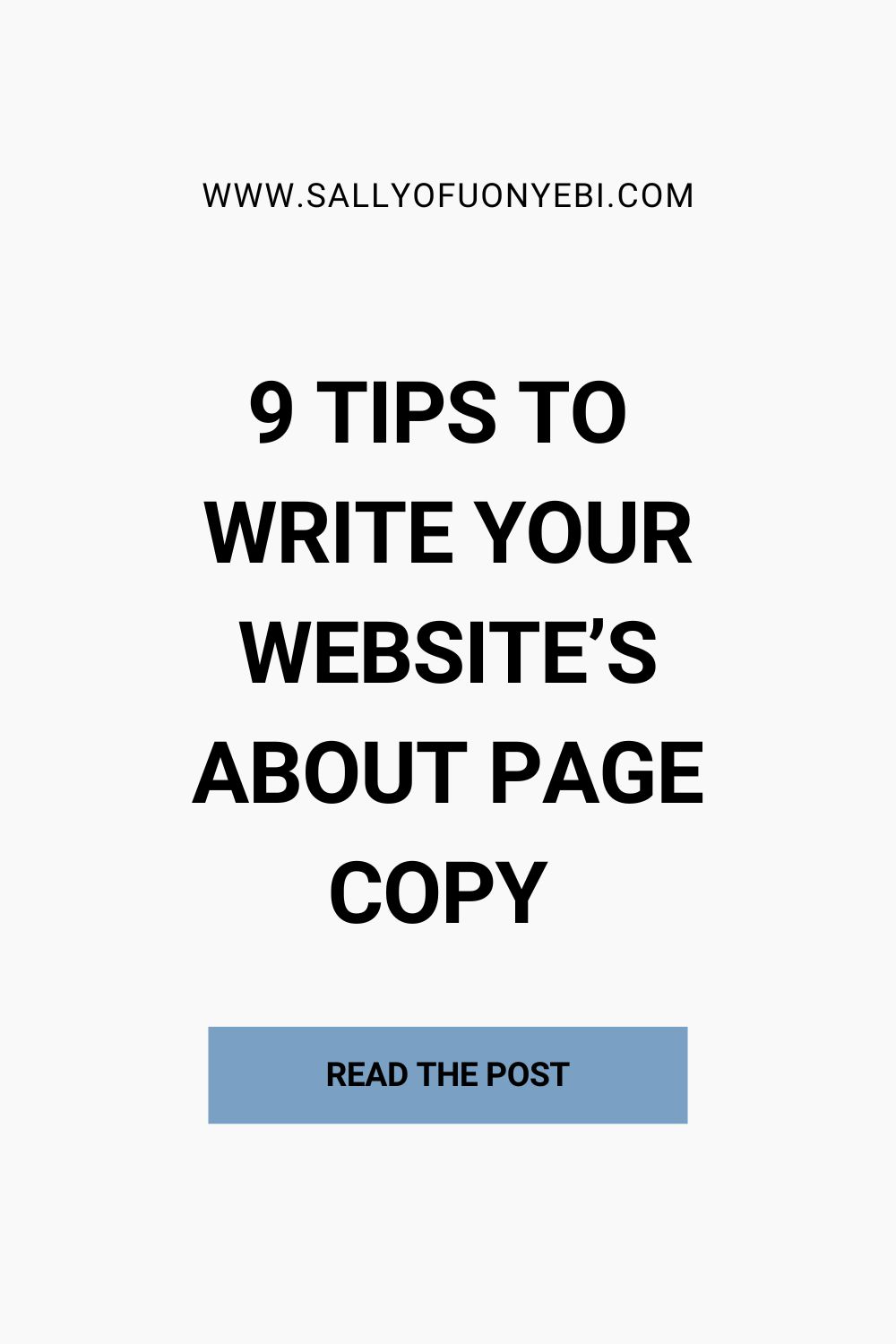
The About Page Copywriting Blueprint
There’s no one-size-fits-all framework for how to write an About page
However, your About page should be about your ideal clients while keeping you in view. It shouldn’t just be about you.
The thing is: you’re going to write about your brand story, experience, and solutions concerning how they matter to your audience.
Because if your About page is solely about your brand, your ideal client will pass on it and continue their search for an answer.
I love how Donald Miller of The Storybrand explains this. Your ideal client will think, “Oh, this is another hero, like me. I wish I had more time to hear their story, but right now I’m busy looking for a guide.”
But by making them the center of your story, you can grab their attention, position yourself as the guide they are looking for, and prompt them to learn more about how you can make their dreams possible.
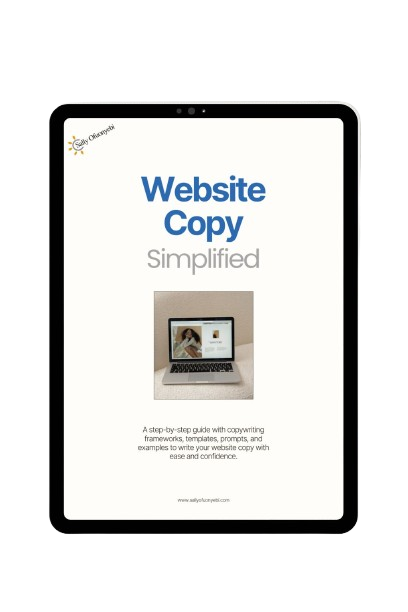
Easy Website Copy Template
Blank screen blues? Not anymore. This plug-and-play website copy template gives you the words, the flow, and the strategy to finally nail your message all by yourself.”
How to Write an About Page for Your Website
Using my About page as an example, you’ll learn how to write an About page that interests and converts dream clients.
Let’s get into it.
1. The “About Them” Hook

Like the hero section on your homepage, this is the very first thing readers will see on your About page. And because you don’t want to bore them with a page that is all about you and your qualifications, you need to make it about them.
Because, as I stated earlier, they are the hero, and your story should be about what they want, what they’re going through, and how you can help them.
Your hook should be a statement that speaks directly to their needs, beliefs, or core desires.
Then, follow up with a quick blurb that gives them a lightbulb moment. Something like sharing a powerful quote, dropping a truth bomb, stating a mind-blowing statistic, or debunking a myth that relates to them.
2. Relatability Corner

This is where you go big on “being relatable.” Essentially, you want to make a strong connection with your readers from the get-go by describing a scenario they can imagine themselves in.
Do this either by leading in with their challenges and empathizing with their pain points, or by painting a desirable picture of their dreams.
The goal of this section is to let them know that their dreams are achievable and that their problems can be solved.
3. Mission Statement
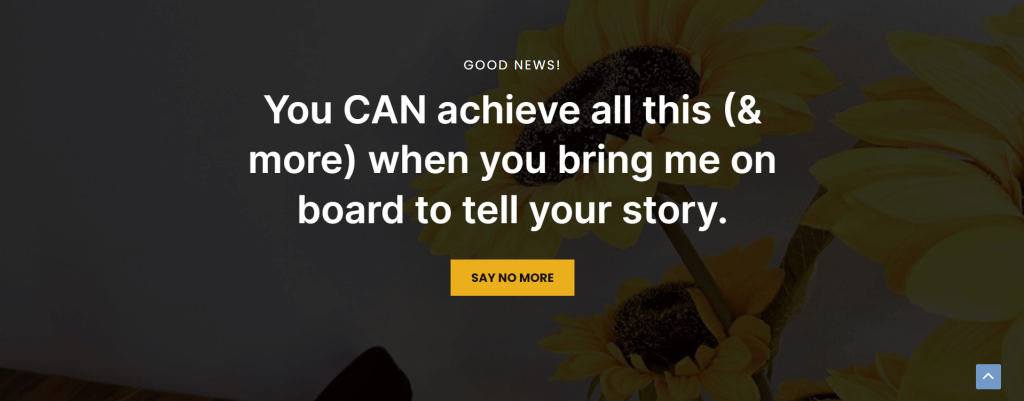
Here, I established what my mission statement is as a response to the reliability section (to maintain the flow).
You can simply state what your brand mission is.
This follows either of these formulas:
- To help you achieve [the desired result] through [your solution/method]
- To help you achieve [the desired result] so you can [benefit].
E.g., To help you simplify your business processes so you can scale.
Make this simple and clear so that if a skim reader lands on this section, the person understands immediately what your brand is all about. Even a layman who knows nothing about your niche and expertise should be able to grasp what your brand mission is.
4. “Meet Your Guide” Section
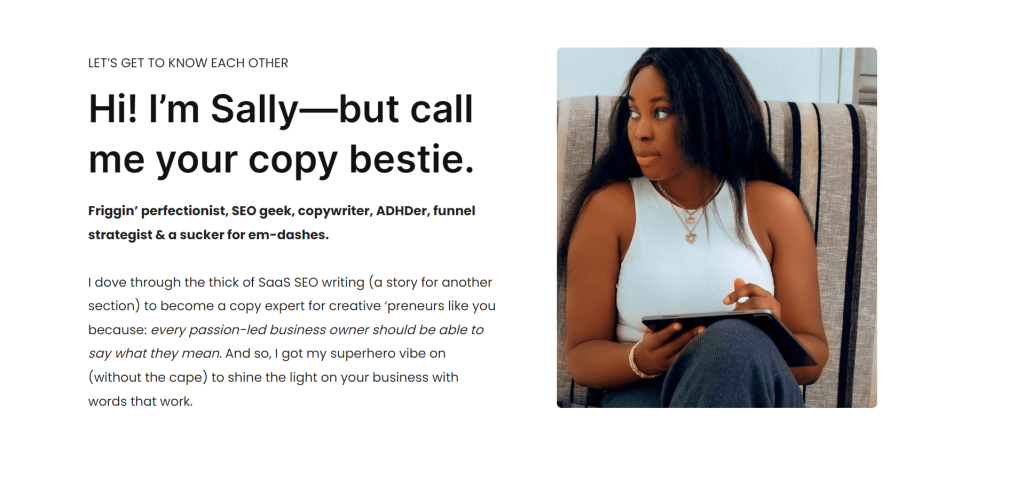
Now that your ideal clients know that what they want is possible, tell them they can make it a reality by trusting you to help them out.
Do this by introducing yourself as their perfect guide with a link to your Services page to find out exactly how you do this.
They are the heroes who are on a journey to achieve a specific goal and need to overcome the obstacles that are in their way. And you’re the guide who will give them the tools and resources they need to overcome these challenges and fulfill their dreams.
5. A Little Backstory
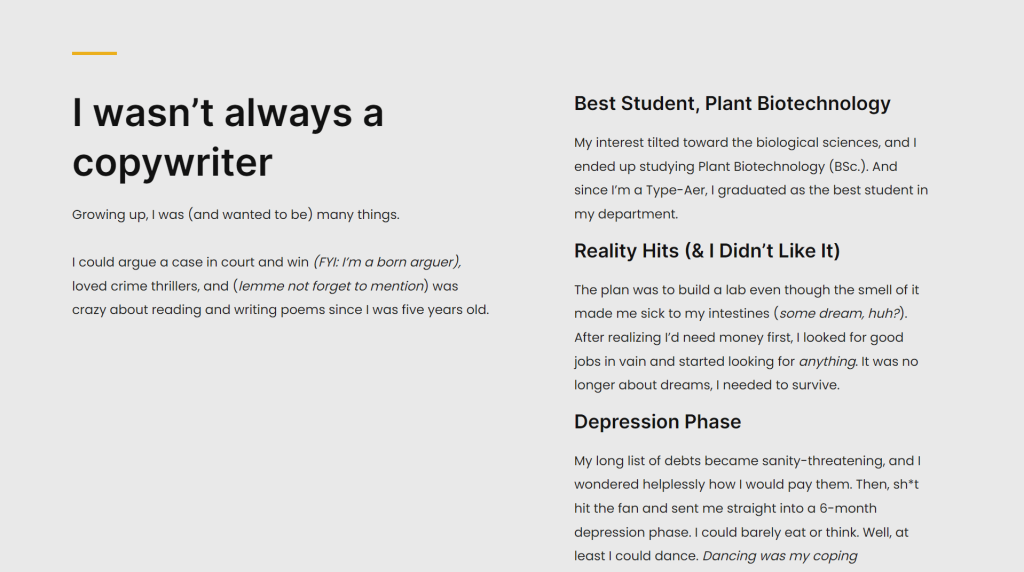
Who doesn’t love a good story?
No wonder the writer, Elmore Leonard, said, “A story is life with the boring parts left out.”
Give your audience a little background as to how you got here. You weren’t always the passion-led entrepreneur you are now. At some point, you might have been a burnout employee, confused person, bored 9-to-5er, college grad who had zero clues about her next steps, or someone who simply wanted more.
Take them back in time to before you became an expert. This gives them a little peek into who you were and how much you sacrificed to be who you are. Their perfect guide.
6. Your Point, In Summary
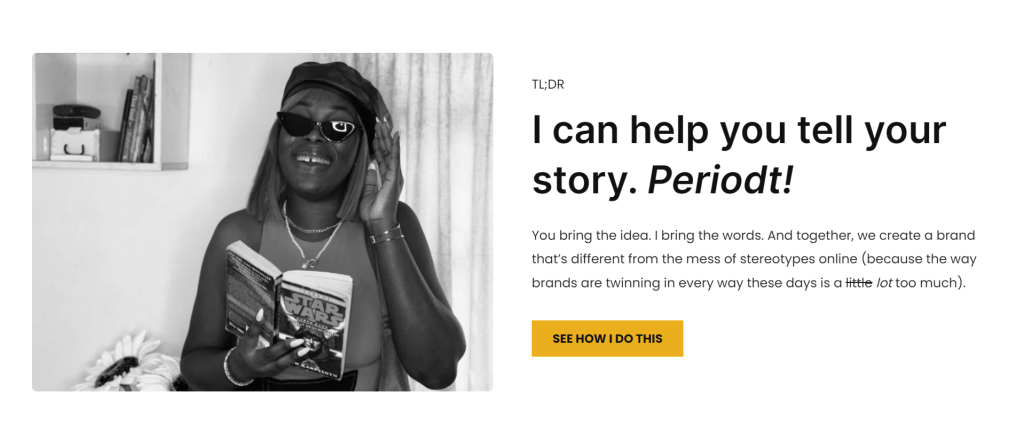
Reiterating your points takes you one step closer to becoming top of mind. So, don’t be afraid to repeat what you’ve been saying—in a different style, of course.
This time, you’ll keep it short. Basically, you want to give a TL;DR version (a recap) of your sales pitch so far.
Yes, your About page is a form of sales copy, as are your other core pages (your Contact page included), and they should promote your offers and expertise at every chance.
So, give a summary of how you help make your audience’s lives better through a quick, relevant scenario or industry research report that pinpoints why your expertise matters.
7. Your Core Values
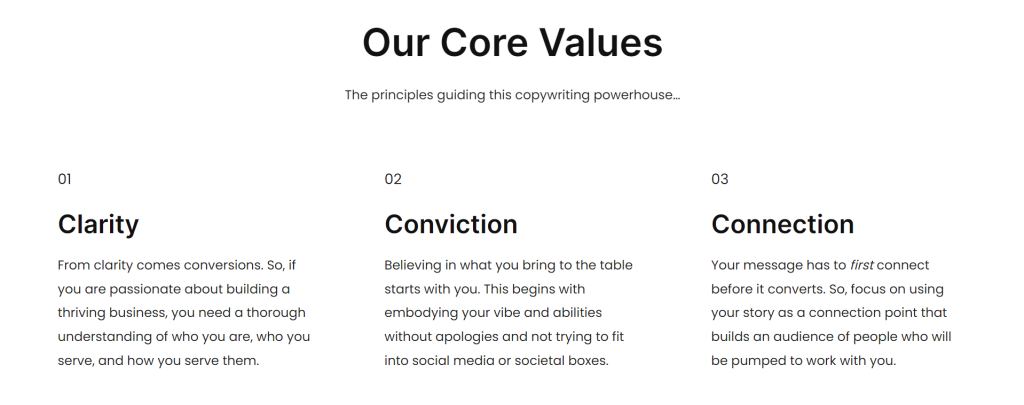
Your core values are the ethics and principles you care about, and they should guide your brand essence.
Don’t just create a core value section for the fun of it or use buzzwords & ChatGPT-like words to describe what your core values are. Avoid terms such as “disruptive” and “authenticity.” They are vague and complex.
Use simple words that summarize your ethics and make them evident in every aspect of your business.
8. Personality splash
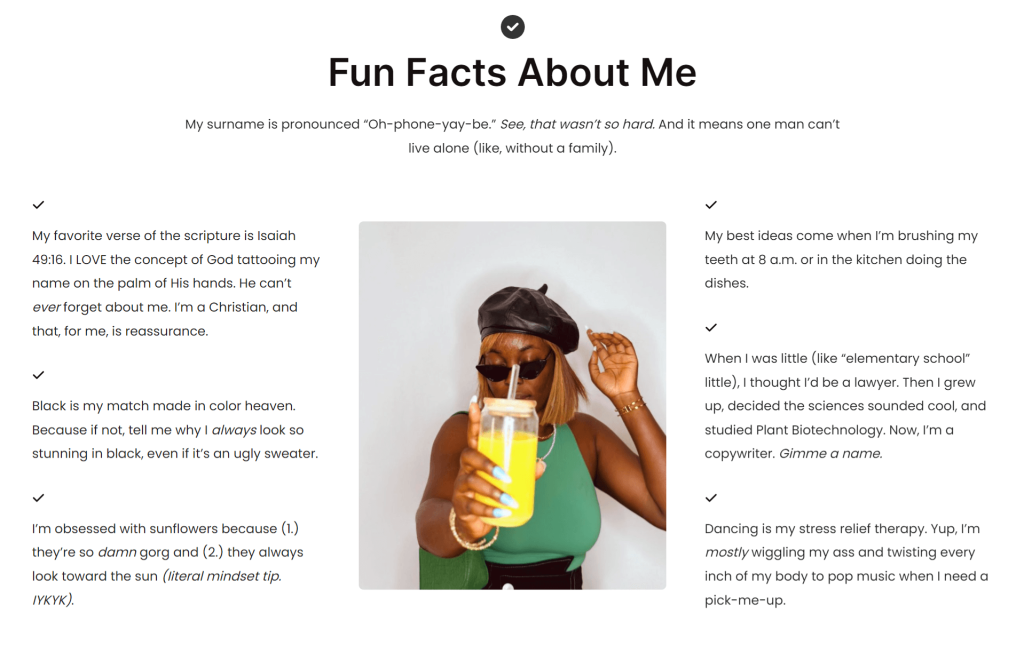
Now that your ideal clients know that you’re the guide they need on the journey to their dreams, can you drop the “expert” hat for a few seconds?
Allow your readers to get to know you off-screen. Show them what you’re like in real life by sharing some fun or not-so-fun facts about yourself.
Feel free to be straightforward, quirky, crazy, sarcastic, or whoever it is you are. Share your hobbies and weird obsessions, if you have any. This might be the connection point for your next client.
9. Final Call to Action
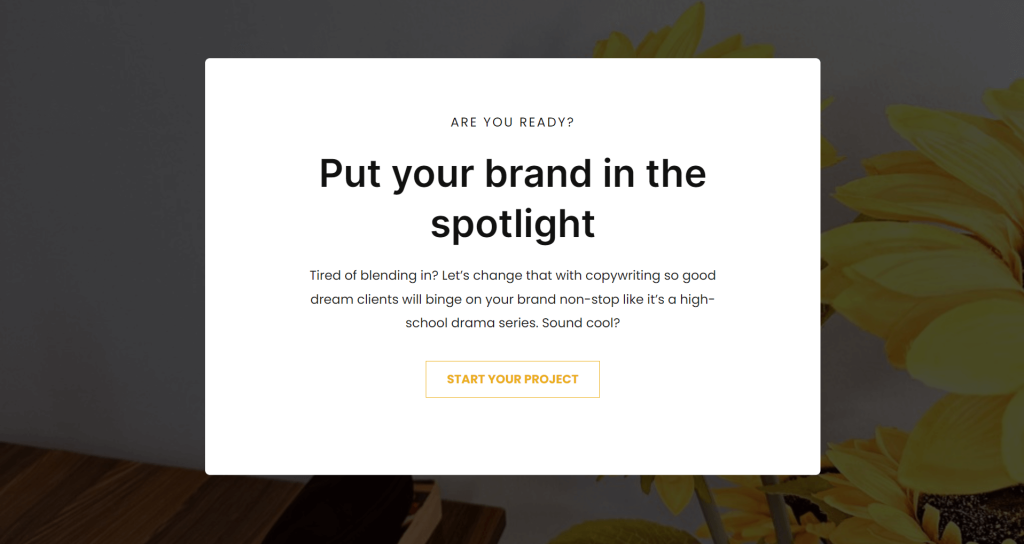
You already know, but because there’s no overemphasizing the importance of a call to action, I’m going to say it again.
Never ever end any piece of sales copy without a CTA. Tell your readers what step(s) to take next.
Your final CTA button can be a call to binge your blog content, check out your services, or book a call, whatever floats your boat.
In Summary: How to Write an About page
The best About pages spark interest and conversations in the minds of your ideal clients. And with this 9-point template above, you’ll be able to create such a page for your business website.
Want to write copy that gets visibility and leads for your website, grab the Website Copy Template.

Easy Website Copy Template
Blank screen blues? Not anymore. This plug-and-play website copy template gives you the words, the flow, and the strategy to finally nail your message all by yourself.”
Or, if you’d like to collaborate with a copywriter who can bring your website project to life, check out my website copywriting services.
